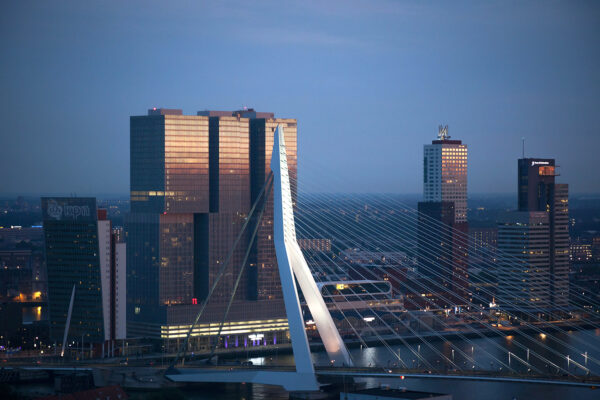
Wednesday’s referendum in the Netherlands about the European Union’s association agreement with Ukraine is best understood as another battle in the continent’s “blue-red” culture war.
The Atlantic Sentinel has argued that the Dutch “no” had less to do with Ukraine than a general sense that the EU has been making decisions over the heads of ordinary voters — from the proposed EU constitution in 2005, which was rewritten as the Lisbon Treaty after being rejected by voters in the Netherlands and France, to the bailouts of Greece, which a majority of Dutch people opposed.
The outcome on Wednesday was similar to the 2005 referendum. 62 percent voted down the EU constitution then. 61 percent voted against the Ukraine treaty this week.
But the “no” vote was not evenly spread across the country.
City elites
In only 22 out of 390 municipalities did proponents of the treaty outnumber opponents. But those 22 included some of the biggest cities in the country. 52.5 percent voted for the treaty in Amsterdam. In Utrecht, the fourth largest city in the Netherlands, 57.4 percent voted in favor.
University towns like Groningen, Leiden and Wageningen also backed the pact by wide margins, as did some of the wealthy suburbs around Amsterdam, Haarlem and Utrecht.
In more working-class Rotterdam, by contrast, 64 percent voted down the treaty. Opposition was even higher in some rural municipalities.
Culture war
Such city-countryside divides are not unique to the Netherlands. Nor is the Netherlands, despite being one of the most densely populated and probably one of the most liberal places in the world, so unique as to not have them.
The average denizen of multicultural Amsterdam will be better educated, more worldly and wealthier than her compatriot in a small town in Zeeland, so her political opinions are more likely to be liberal and pro-European.
Andrew Sullivan, a British blogger, has described this as Europe’s “blue-red culture war over modernity.”
“Blue Europe,” he argues, is “internationalist, globalized, metrosexual, secular, modern, multicultural.” It favors European integration and votes for parties that are either green or pro-business but anyway socially liberal.
“Red Europe,” by contrast, “is noninterventionist, patriotic, more traditional, more sympathetic to faith, more comfortable in a homogeneous society.” It is less mobile and struggling to maintain its living standards in an era of rapid economic and social change. It votes for parties on the far left and the far right that are nationalist, protectionist and defenders of the welfare state.
Fringes
In the Netherlands, only the Socialist Party on the far left and the Freedom Party on the nationalist right rejected the association agreement with Ukraine: both “red” in their own ways.
The biggest supporters of the treaty were the liberal Democrats; a party that — going by Sullivan’s definition — could scarcely be “bluer”.
All three are in up in the polls. The Freedom Party benefits the most from the anti-EU sentiment whereas the liberal Democrats, and to a lesser extent the Greens, have consolidated the Netherlands’ “blue” vote.
The challenge is for those parties in the middle, including Prime Minister Mark Rutte’s right-wing liberals, his Labor Party allies and the opposition Christian Democrats, whose voters are divided. All three supported the association agreement with Ukraine and called for a “yes” vote, but a poll last week showed that 15 to 50 percent of their supporters were determined to vote “no”.
